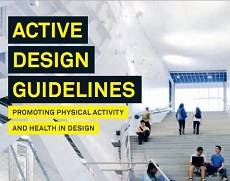August 28, 2013
Dull corporate offices with no “buzz” inhibit productivity, complain staff
Creating a dynamic and creative workplace is dependent on a number of factors; the office layout and design, the style of management and the wider company culture. Get these elements right and, says workplace consultants Morgan Lovell you hit the “Buzz Barometer” – a combination of a good atmosphere, energy and teamwork which encourages productivity and high levels of employee engagement. However, according to their recent research, three quarters (78 per cent) of employees say they would be significantly more productive if their workplace had more buzz. And worryingly for larger organisations, corporates are failing to match small company buzz, with four-fifths (81 per cent) saying SMEs offer a better working atmosphere than large companies.



















May 1, 2013
Video: “sitting is the smoking of our generation”
by Mark Eltringham • Comment, Workplace, Workplace design
[embedplusvideo height=”151″ width=”220″ standard=”https://www.youtube.com/v/iE9HMudybyc?fs=1″ vars=”ytid=iE9HMudybyc&width=220&height=151&start=&stop=&rs=w&hd=0&autoplay=0&react=1&chapters=¬es=” id=”ep7092″ /]
In which a businesswoman rejoicing in the name Nilofer Merchant argues that one of the major causes of ill health in the world today is our sedentary lifestyle, and suggests a small idea that just might have a big impact on your life and health: Next time you have a one-on-one meeting, make it into a “walking meeting”. She is arguing the increasingly well established principle that good ergonomics is not about posture but about movement. This point has been argued before on Office Insight, including here, but the point cannot be made often enough. It’s true that the best chair designs encourage movement for those times when we cannot avoid sitting but, as ever, this is as much an issue of management as it is design.